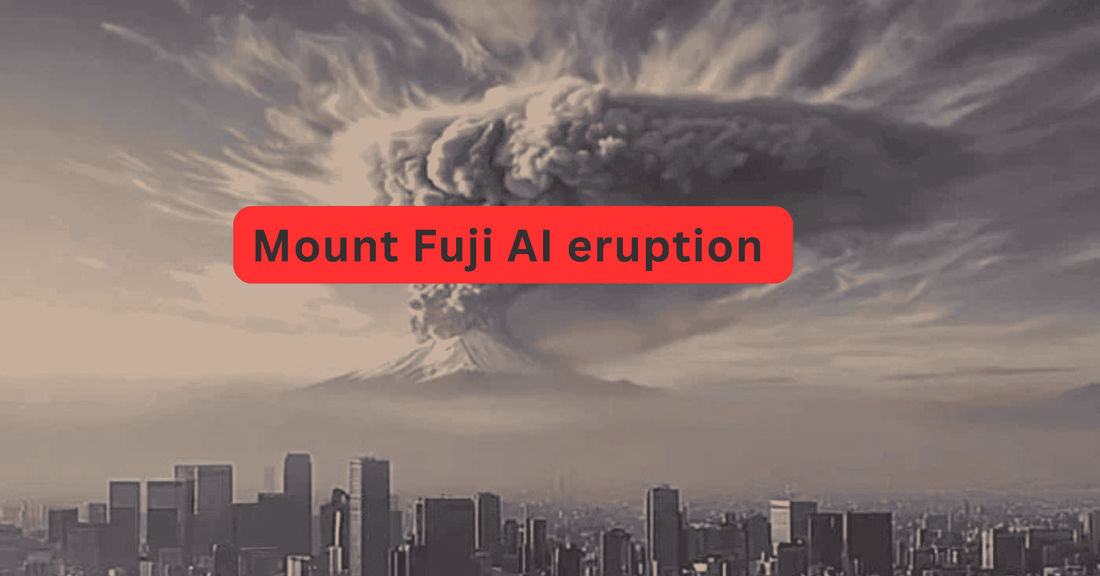AI video warns Tokyo of Mount Fuji eruption risks
Kenji TanakaJapan uses AI to simulate a Mount Fuji eruption, warning Tokyo residents of potential ashfall and widespread disruption.

Japan is using artificial intelligence to simulate the potential devastation of a Mount Fuji eruption, preparing its citizens for a future disaster. The Tokyo Metropolitan Government released an AI-generated video to raise awareness among its 20 million residents about the potential impacts of such an event.
This simulation highlights the urgent need for disaster preparedness in a city that could face significant disruption. The video, released on Japan's Volcano Disaster Prevention Day, visualizes the effects of a large-scale eruption similar to the 1707 Hoei eruption.
It serves as a stark reminder that even though Mount Fuji is currently dormant, it remains an active volcano with the potential to erupt again. The AI simulation aims to help residents visualize specific scenarios and take proactive measures to protect themselves.
Highlights
- AI simulation video released to warn Tokyo residents of Mount Fuji eruption risks.
- Video shows ashfall disrupting transportation, causing power outages, and health hazards.
- Experts emphasize the need for preparedness, as Mount Fuji will inevitably erupt again.
Read More: Xbox to be like Office: Everywhere, says Nadella
Top 5 Key Insights
• Transportation Disruption: Volcanic ash accumulation on train tracks and runways could halt public transportation, including trains and airplanes, severely impacting mobility within Tokyo.
• Power Outages: A mere 3mm of ash could trigger widespread power outages across the Japanese capital, disrupting daily life and essential services. This highlights the vulnerability of Tokyo's infrastructure to even minor ashfall.
• Health Hazards: The fine, jagged particles in volcanic ash can cause serious health issues, including eye and respiratory irritation, coughing, asthma, and inflammation, posing a significant risk to public health.
• Infrastructure Collapse: Wooden structures could collapse under more than 30cm of ash, especially when combined with rain, while even 10cm of ash would render two-wheel drive vehicles unusable, crippling logistical operations.
• Water Contamination: Drains could become clogged with ash, and water sources could be contaminated, leading to water shortages and further exacerbating the crisis, emphasizing the need for resilient water management strategies.
Read More: Chegg Cuts Staff, CEO Replaced Amid AI Disruption
Expert Insights
Toshitsugu Fujii, Professor Emeritus at the University of Tokyo: "Mount Fuji has historically erupted approximately every 30 years, making its current 300-year dormancy unusual. As a young and active volcano, Mount Fuji will inevitably erupt again."
Representative from the Cabinet Office: "The video aims to help the public better understand the risks of a large-scale eruption and visualize its potential impact on daily life, especially since volcanic ash disasters are less frequent than heavy rain or earthquakes."
Read More: AI Search Engines Favor Less Popular Sources: Study
Wrap Up
The AI simulation serves as a critical tool for raising awareness and promoting preparedness in the face of a potential natural disaster. By visualizing the potential impacts of a Mount Fuji eruption, Tokyo residents can better understand the risks and take proactive steps to protect themselves and their communities.
This initiative underscores the importance of leveraging technology to enhance resilience and mitigate the consequences of unforeseen events.
Read More: Trump's $80B Nuclear Reactor Plan Fuels AI Ambitions
Author
Kenji Tanaka - A technology futurist and digital strategist based in Tokyo, specializing in emerging tech trends and their impact. He explains complex innovations and the future of digital skills for Enlightnr readers.
More to Explore
- Choosing a selection results in a full page refresh.
- Opens in a new window.




